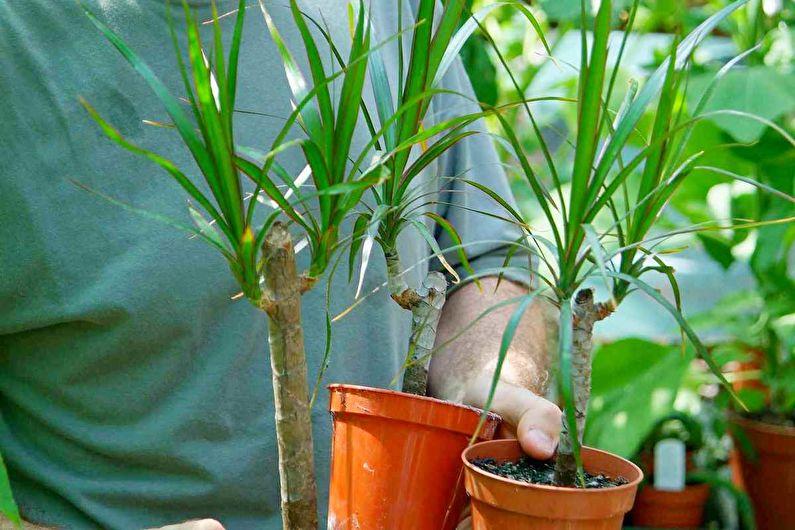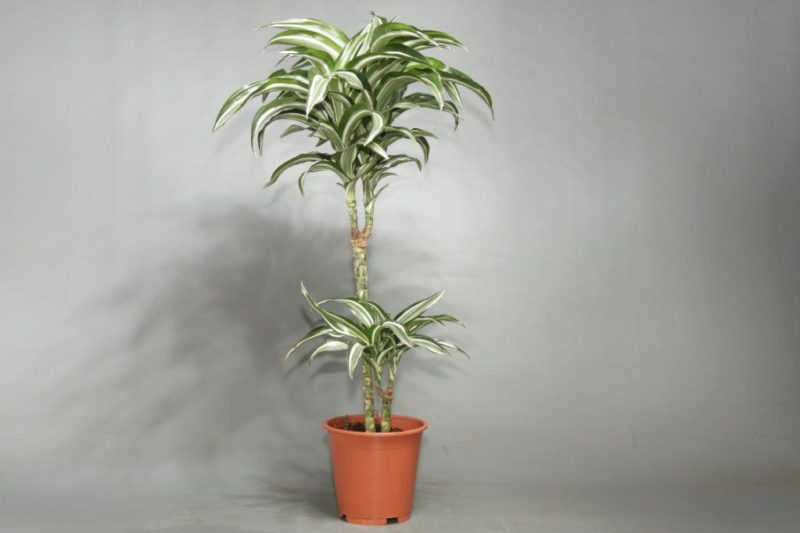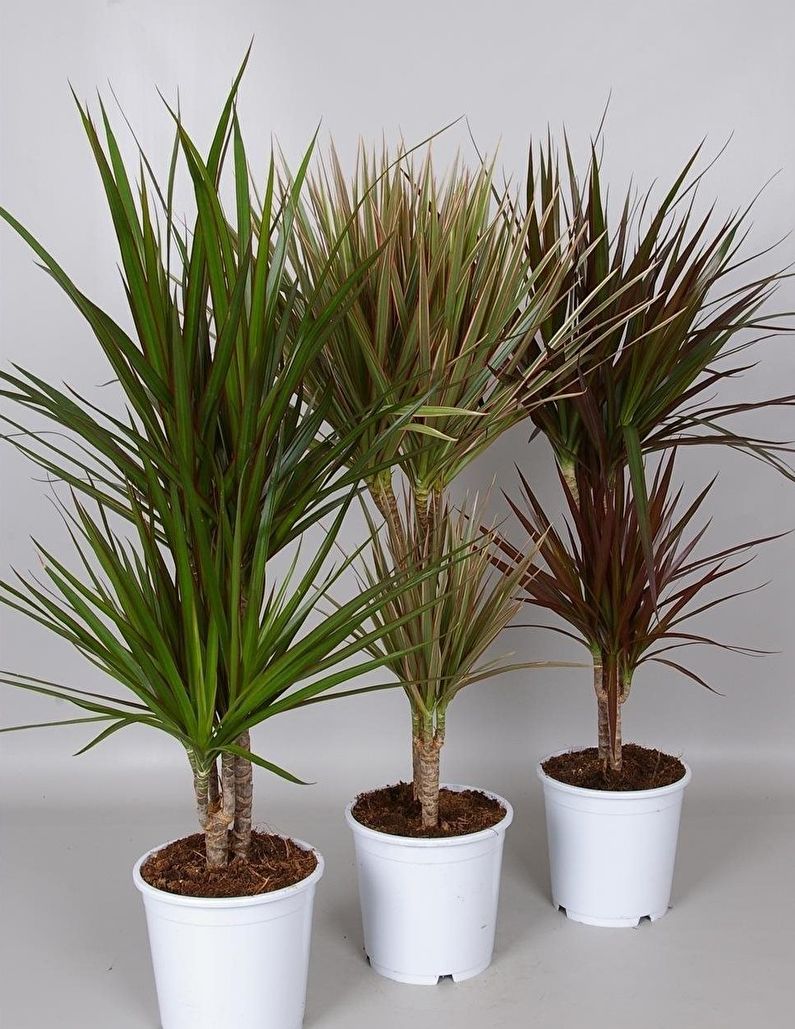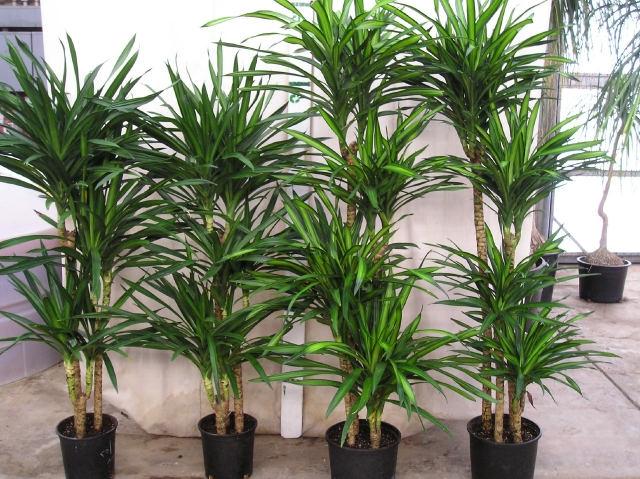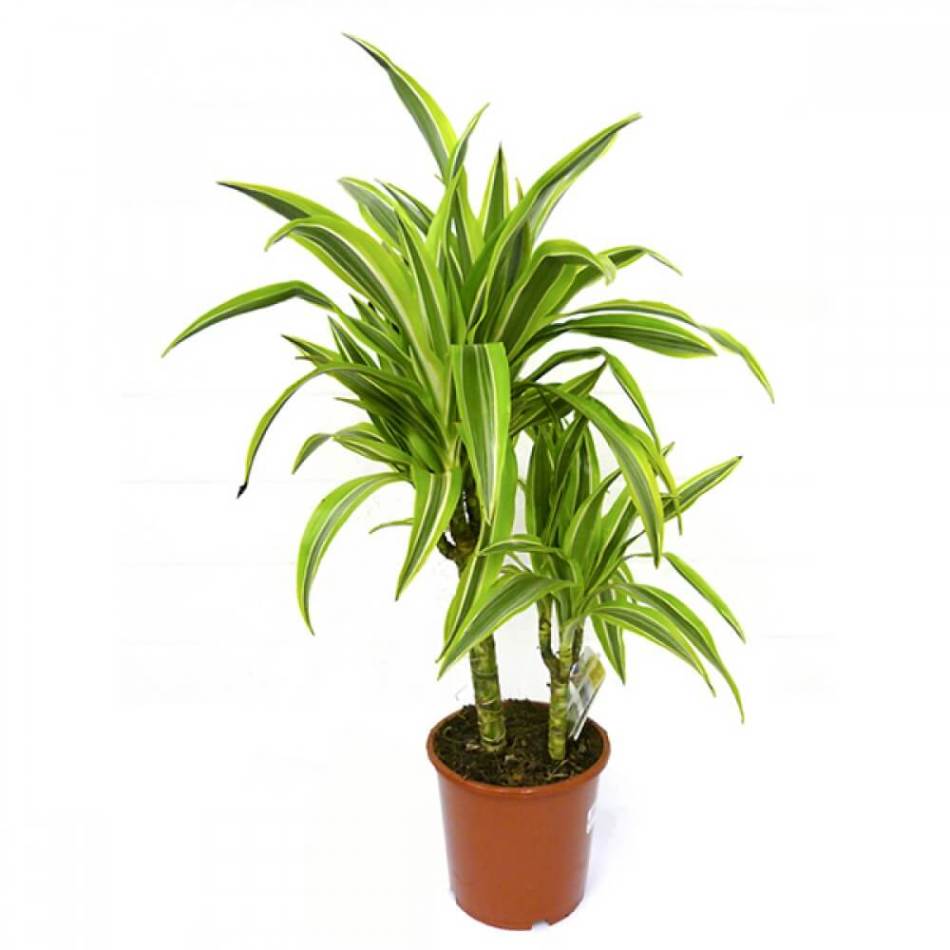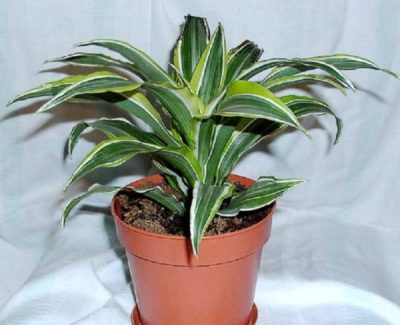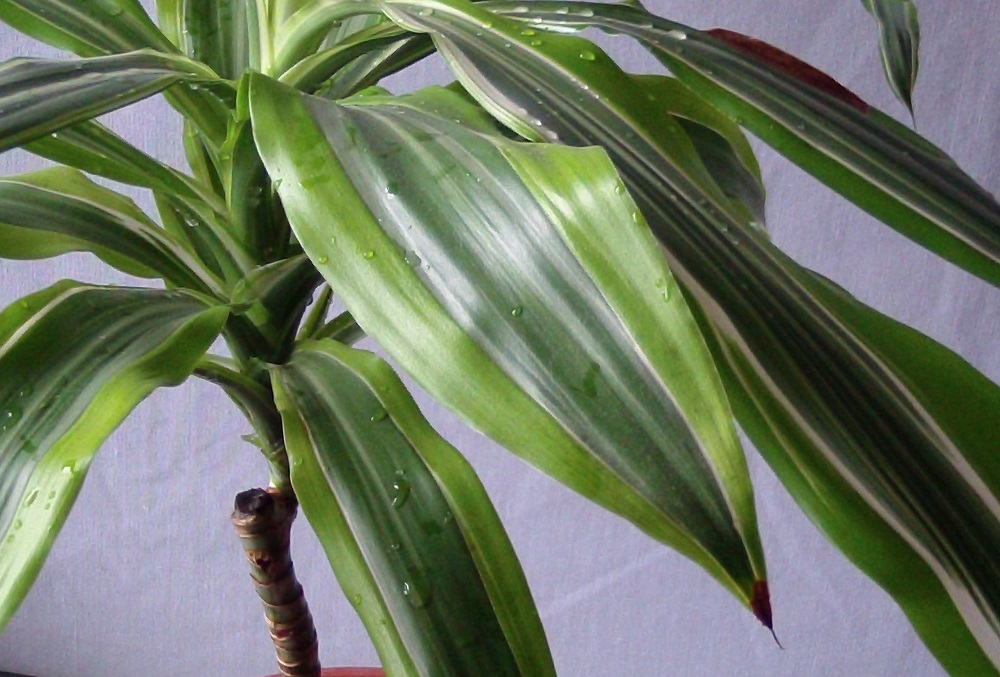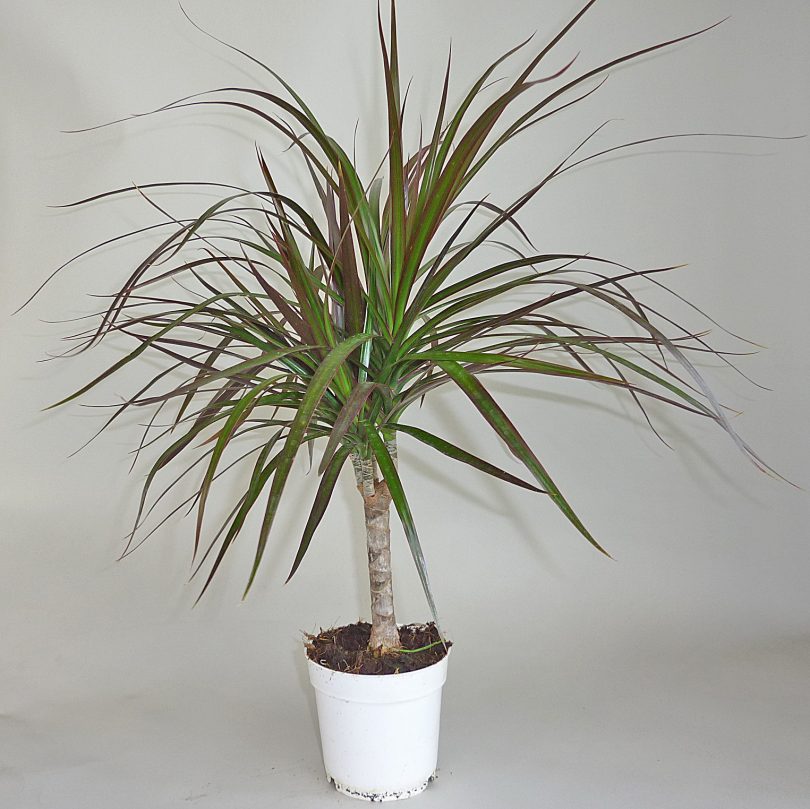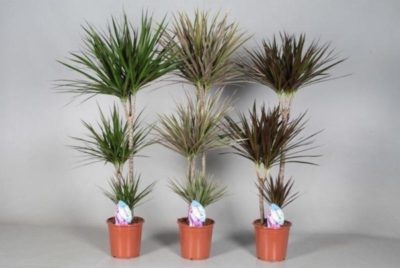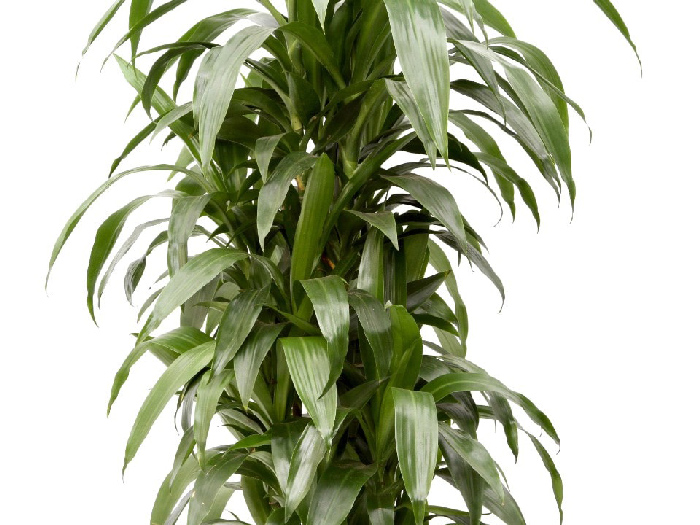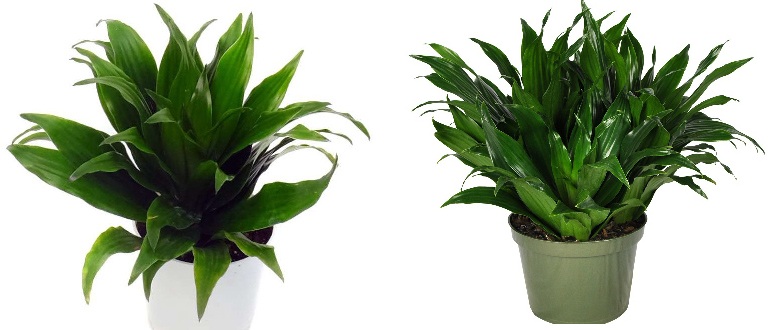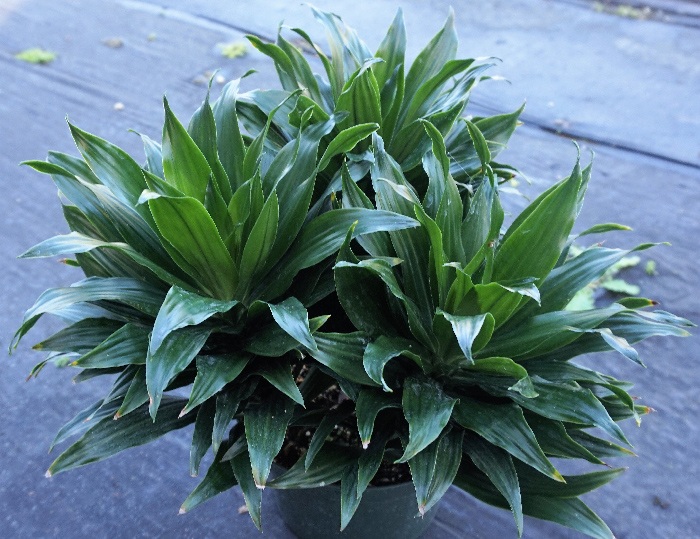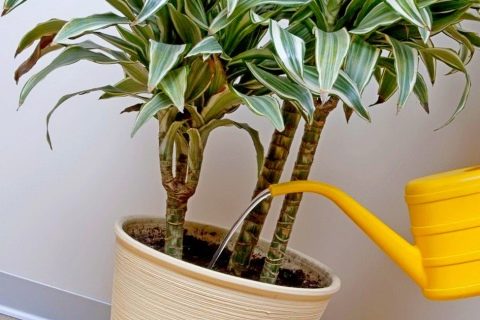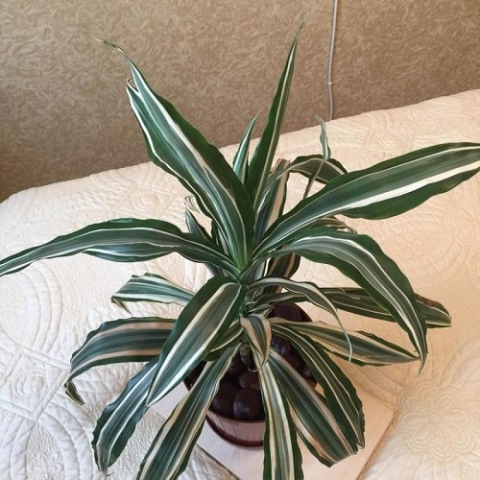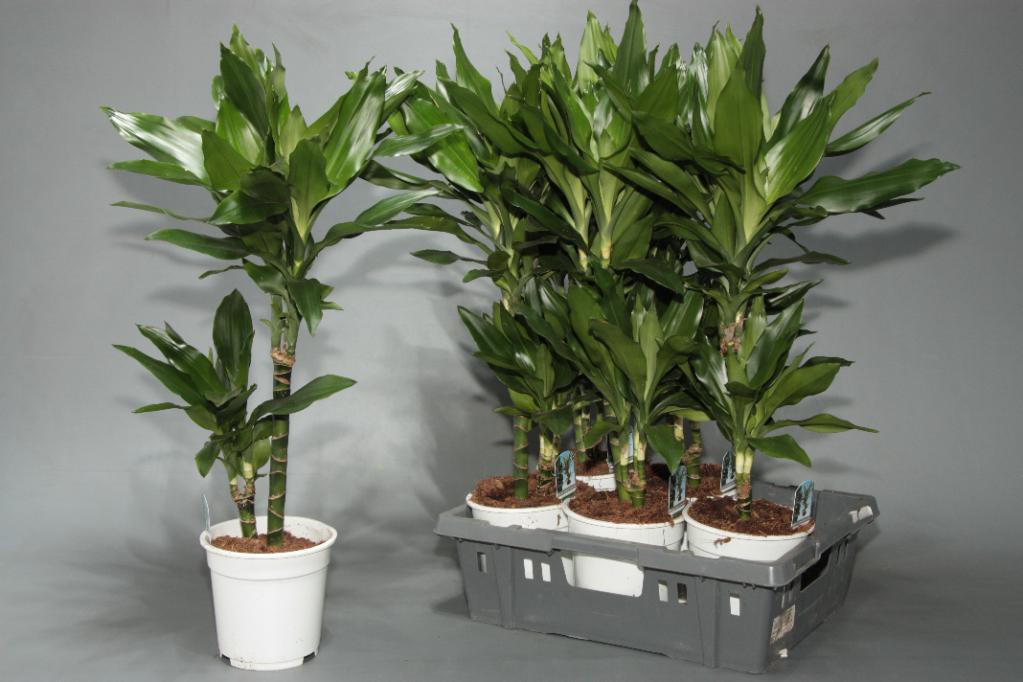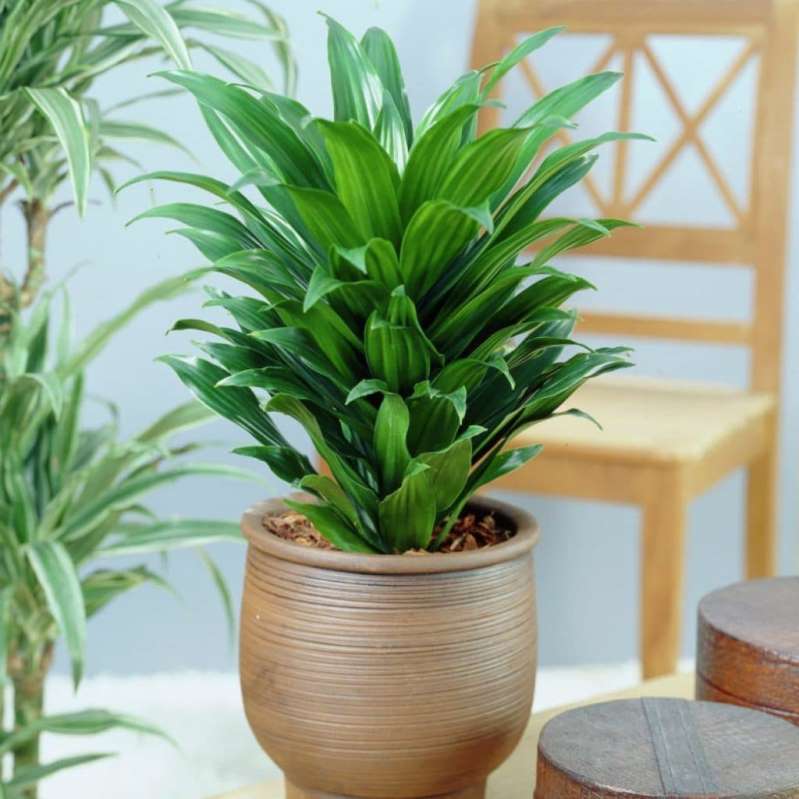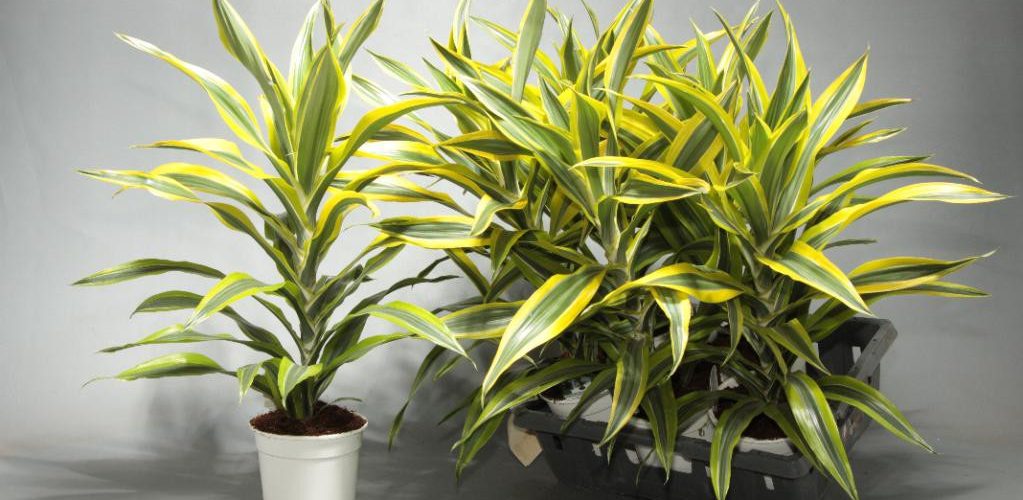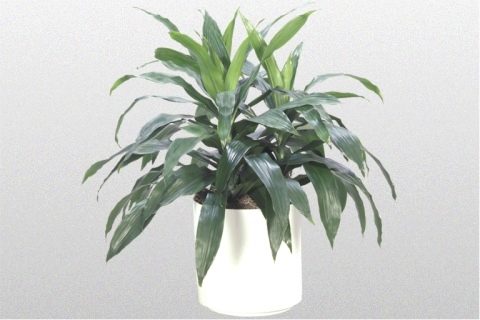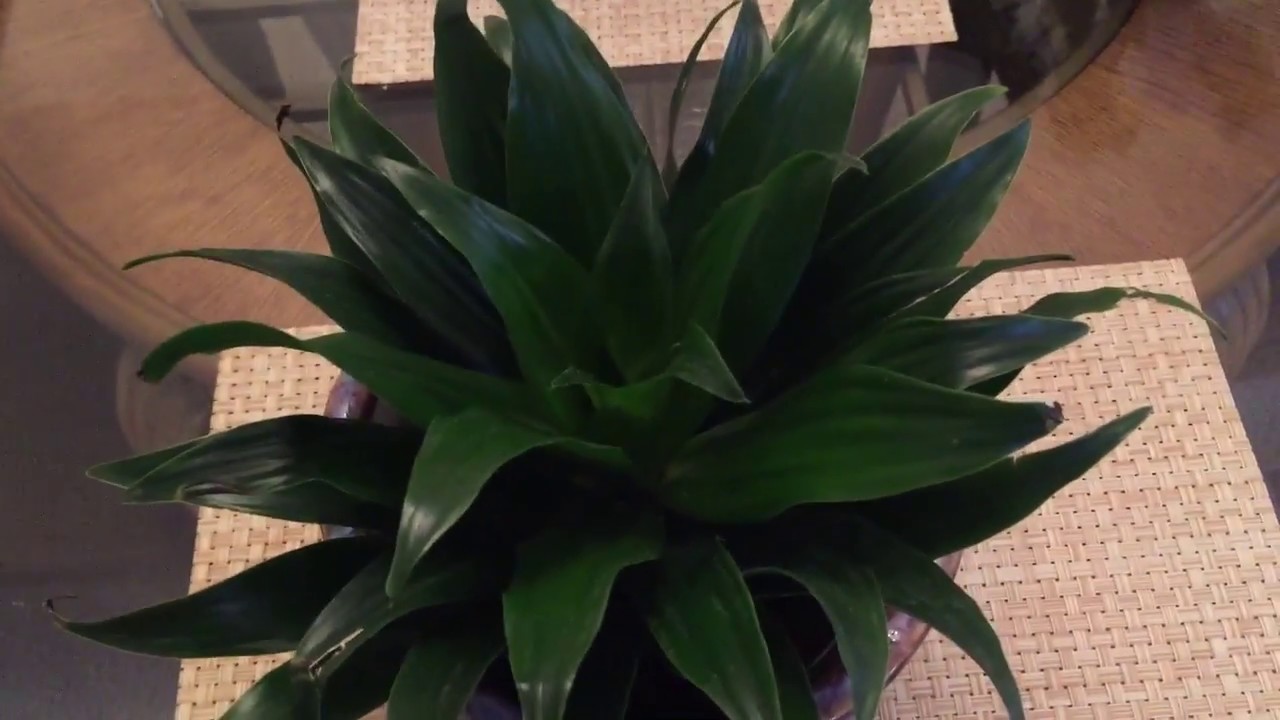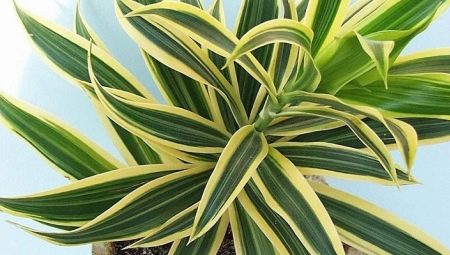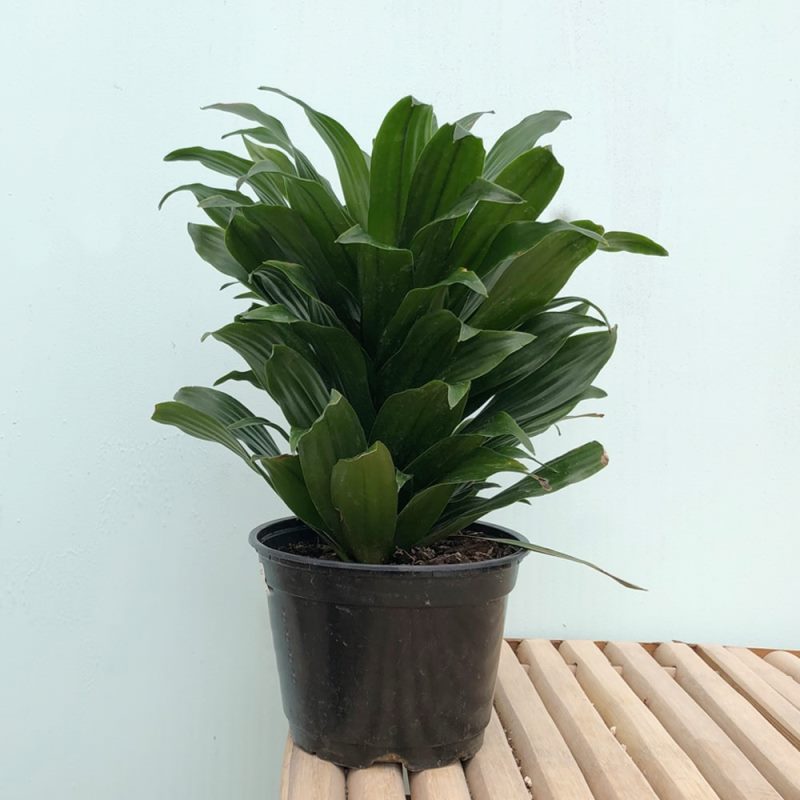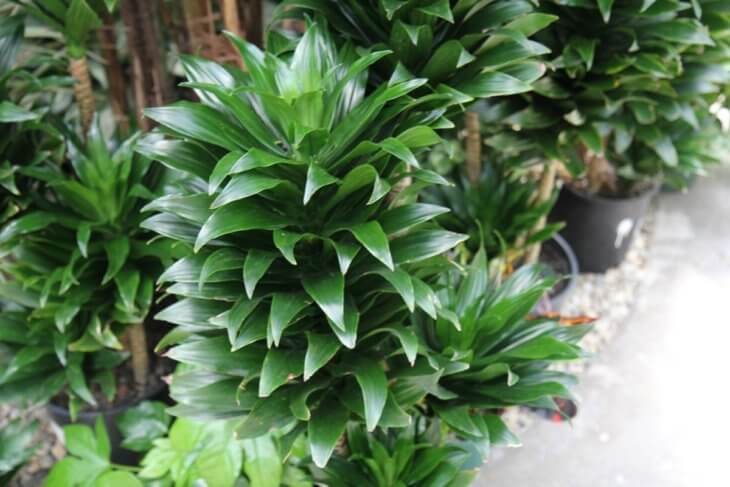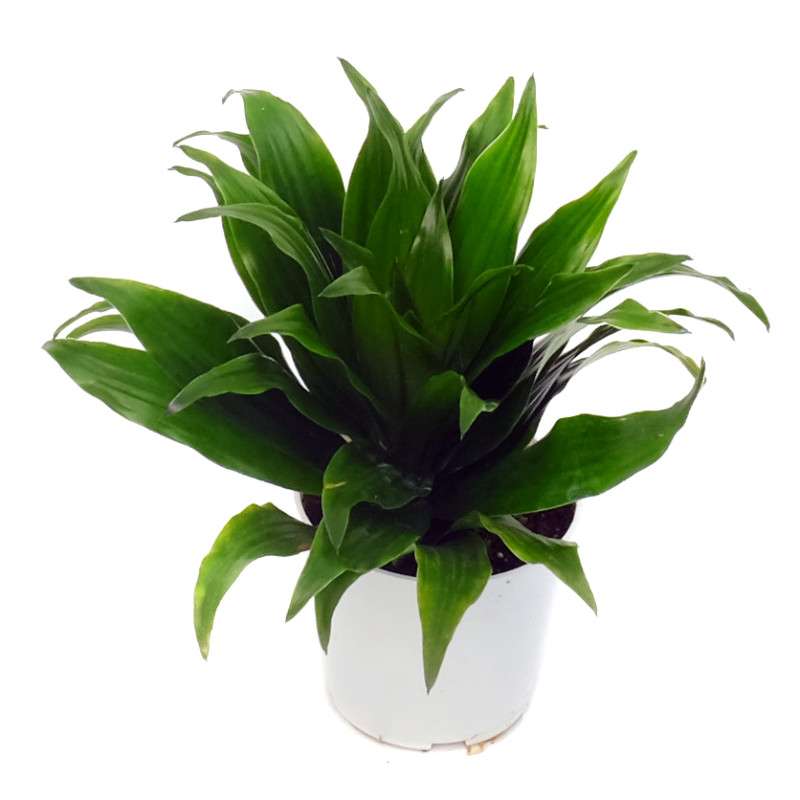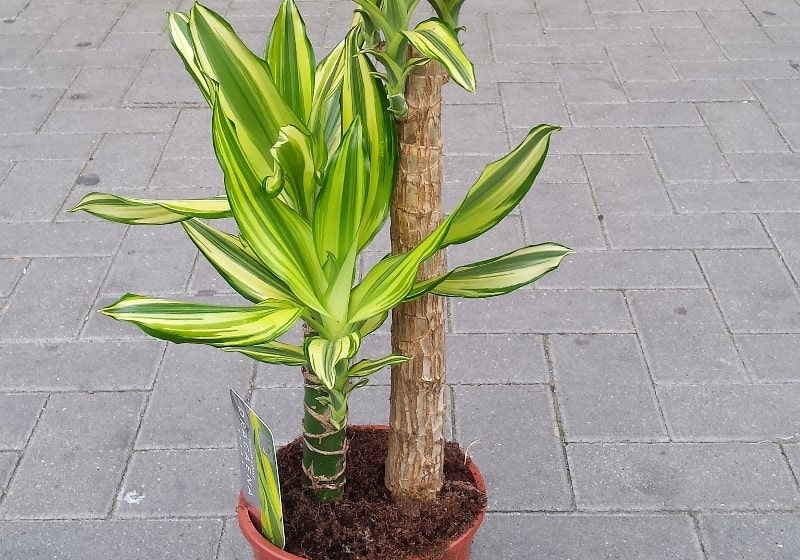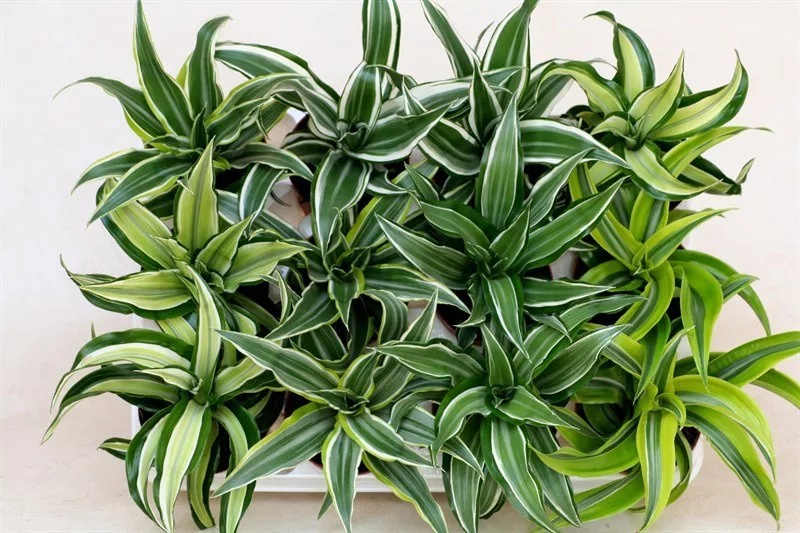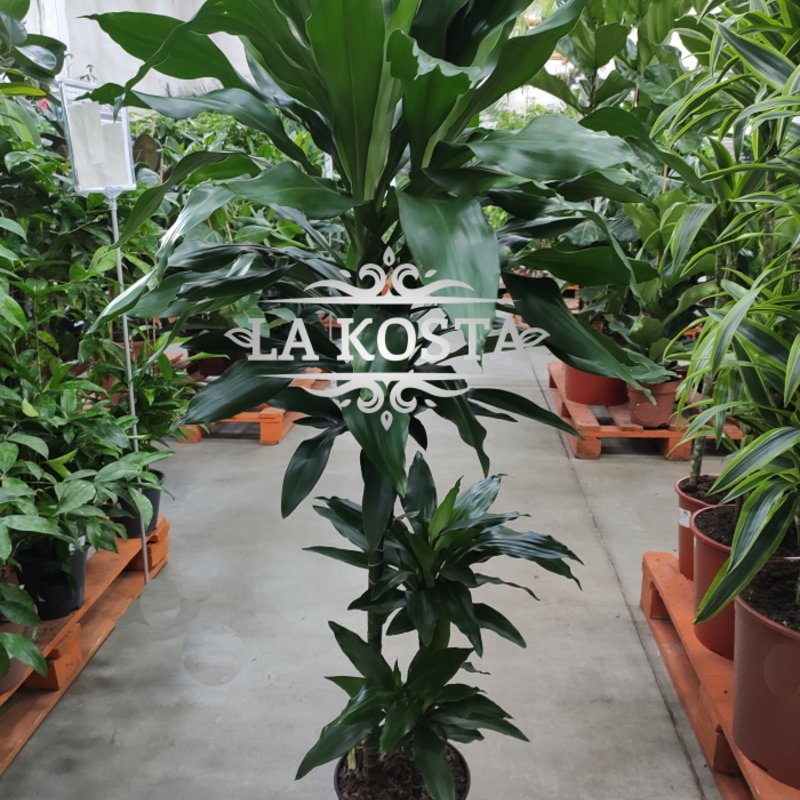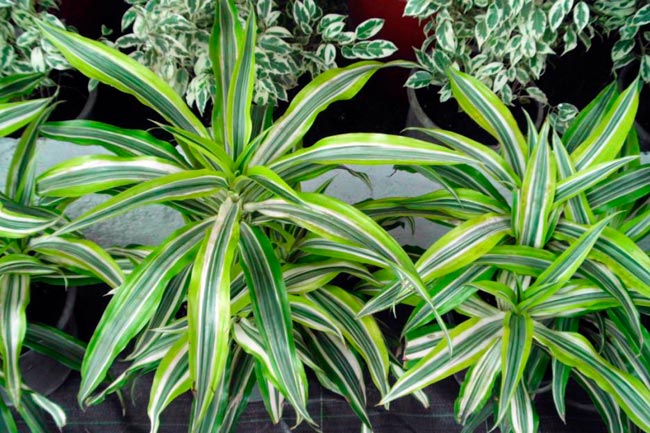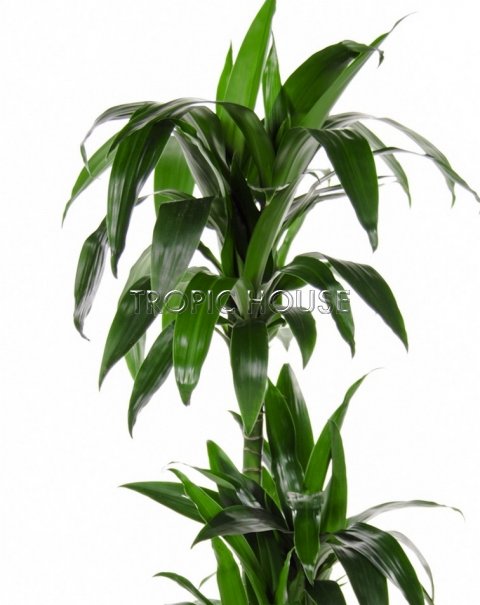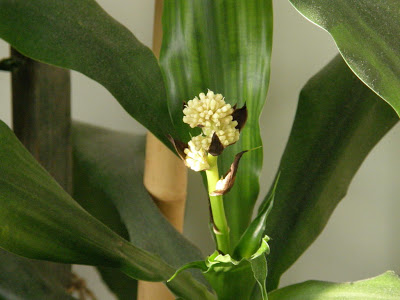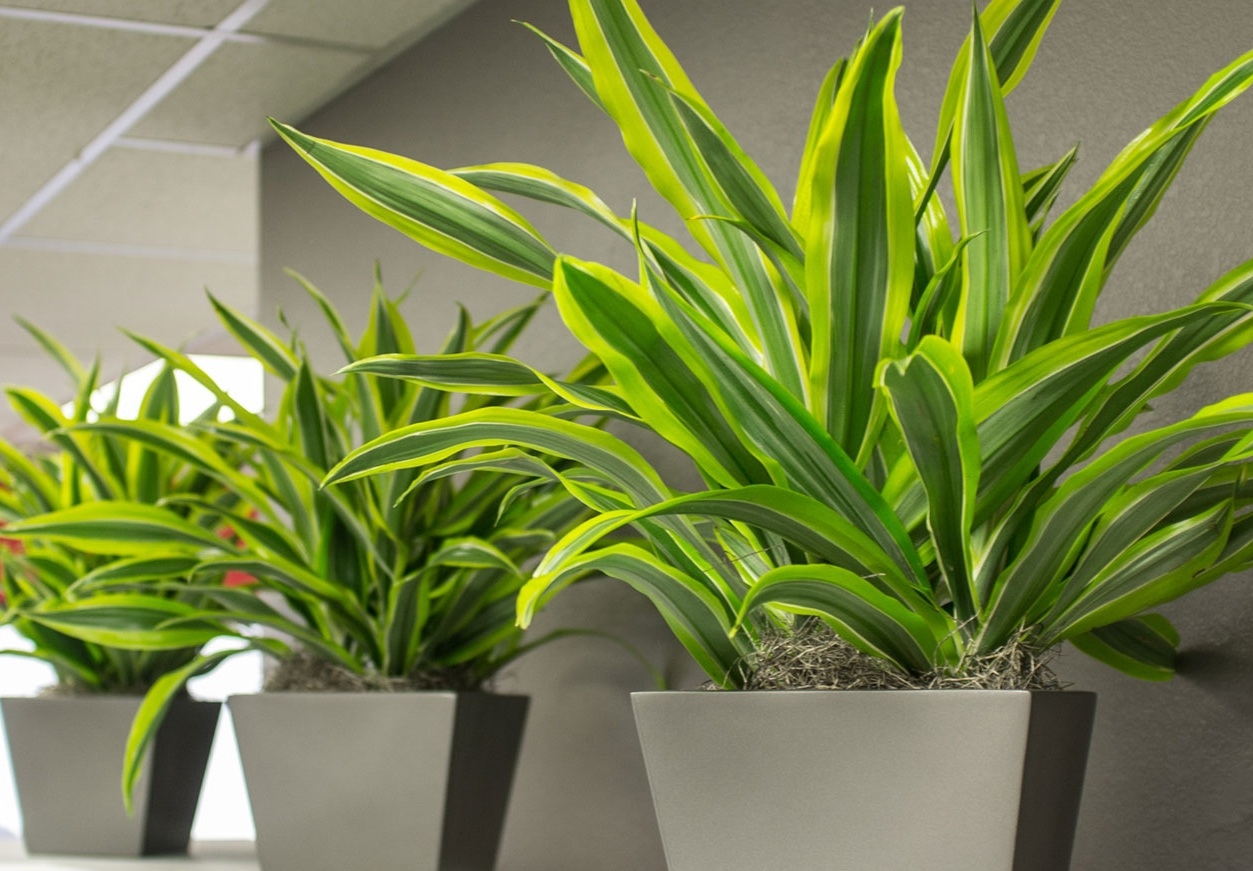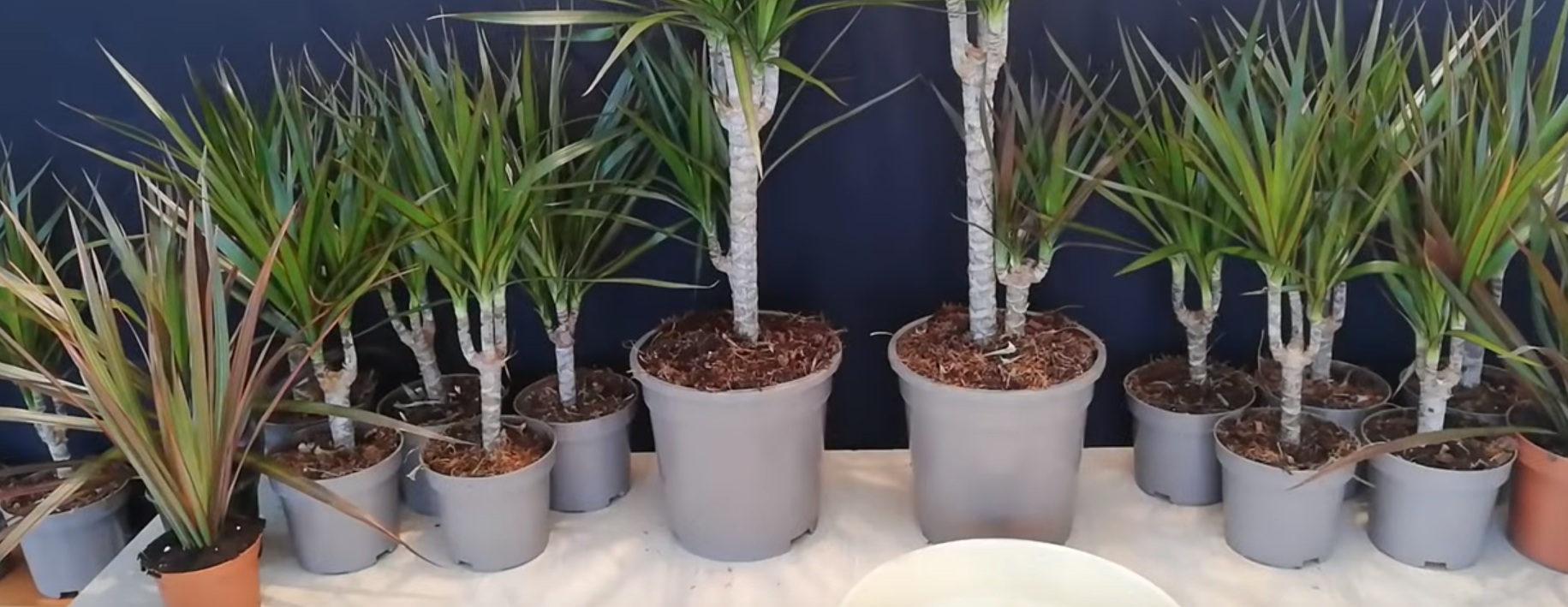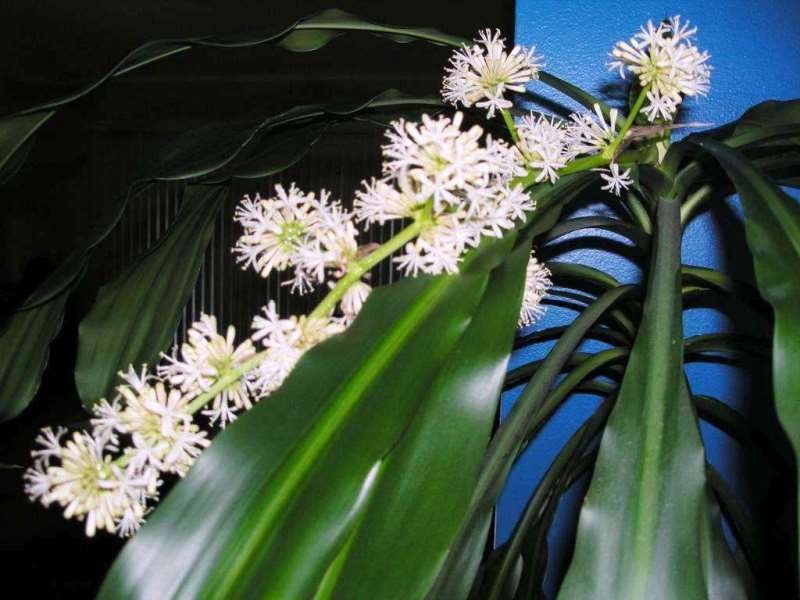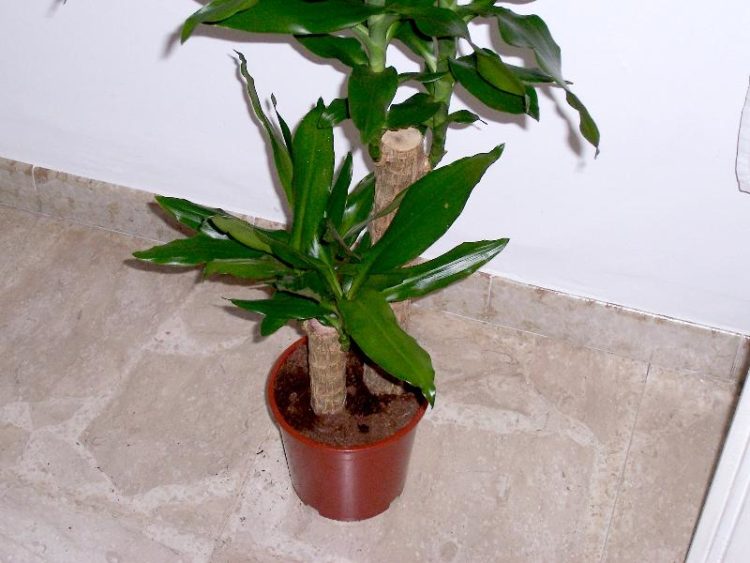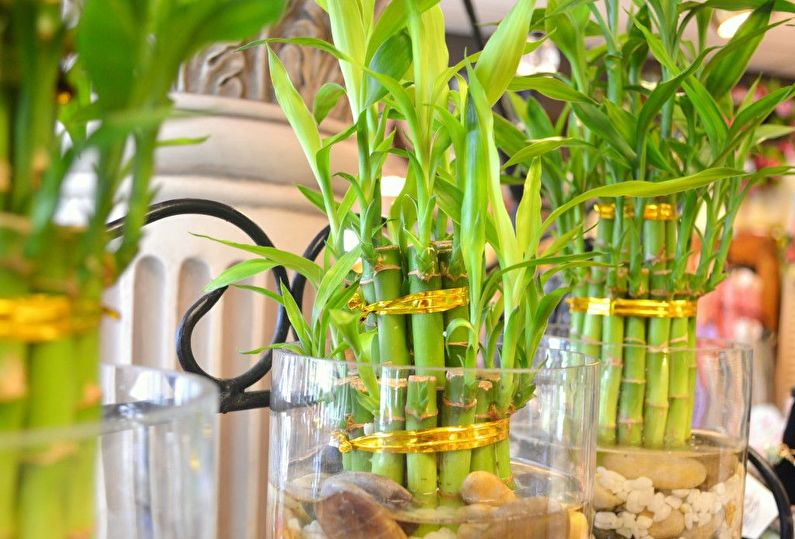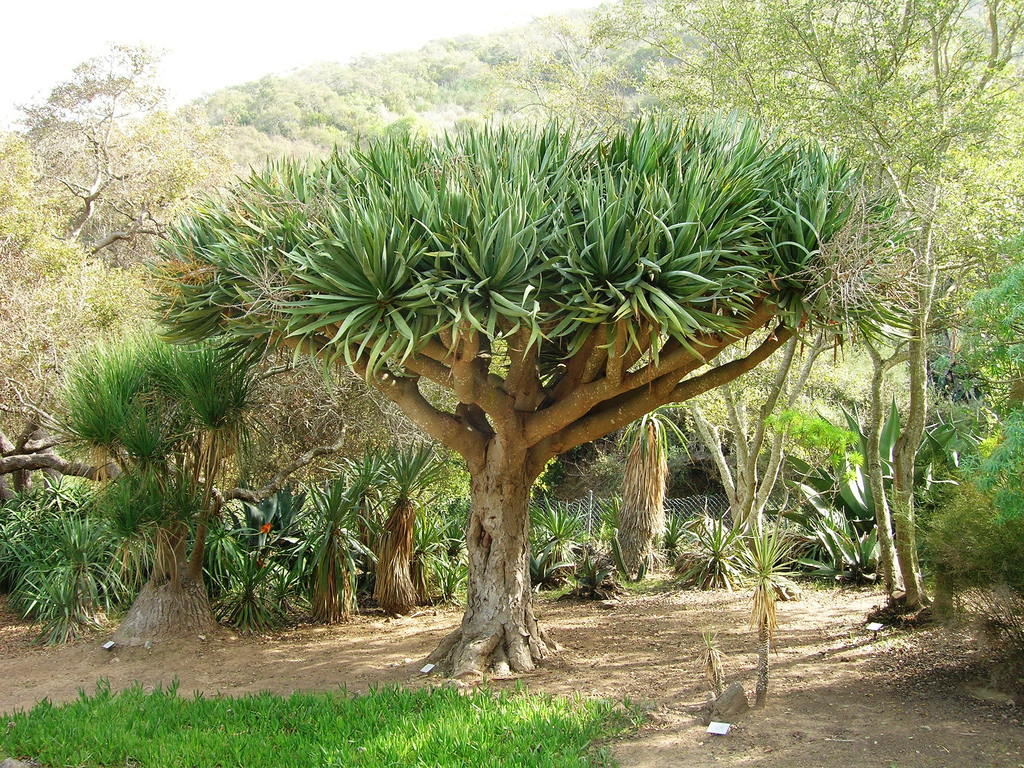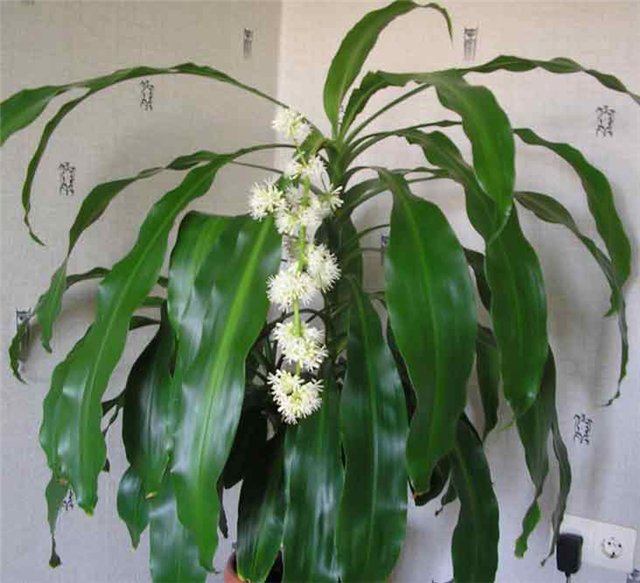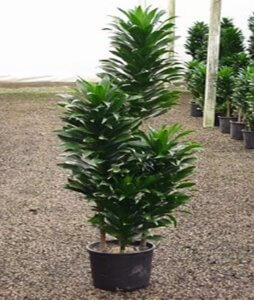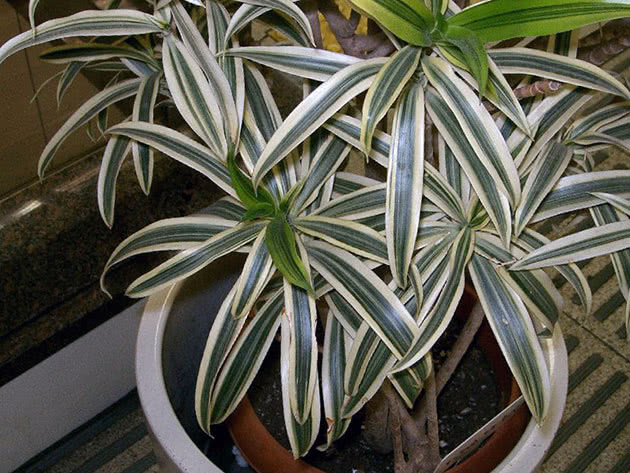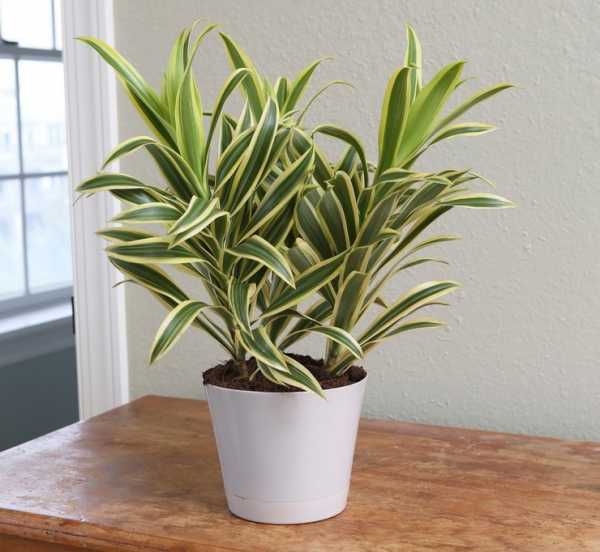Room dracaena care
Dracaena is an unpretentious decorative deciduous plant. In order for the leaves to be saturated with color, it is recommended to properly care for it. High humidity is one of the main requirements. Therefore, you should not put the pots with the plant next to succulents and other flowers that cannot tolerate a humid climate.
Pot selection
In order to plant a plant with a height of about 70 centimeters, a container with a diameter of 20 centimeters and a height of 25 cm is required. It is recommended that the container be stable, since a tall plant can easily overturn it. There should be drainage material such as expanded clay at the bottom. The pot, as the root system grows, will need to be changed.
Soil for growing dracaena
The plant prefers neutral soil. For this, it is recommended to mix 3 parts of earth, several parts of peat and one part of sand.
Shop complex earthen mixtures for dracaena are well suited. You can also use ready-made soil for indoor plants. When planting, you will also need to take care of drainage, expanded clay is best suited.
You may be interested in:
Monstera: Home care, transplanting and reproduction of the Monstera plant is interpreted as amazing or bizarre. The homeland of this vine is the subtropics rich in moisture and warmth, ... Read more ...
Room temperature
The homeland of dracaena is the warm mainland, so the room should be warm. The room temperature should be at least 19 and not more than 30 degrees. At low temperatures, the plant stops growing. The plant does not tolerate dry air, so it is advisable to humidify it.
Advice! In the summer, the temperature should not rise above 25-30 degrees, if this happens, then you need to spray the plant twice a day.
In the winter months, that is, during the dormant period, the ideal temperature will be 16-18 degrees. If the air temperature in the room drops below, the plant stops growing, watering at this time should be completely stopped.
Illumination
Dracaena loves lighted rooms, but does not tolerate direct sunlight. On hot days, the pot should be shaded a little to avoid scalding. Therefore, if your flower stands on the windowsill on the south side, you should make sure that direct rays do not fall on it. Western and eastern windows are considered ideal.
If you place a pots with dracaena on the north side, then additional lighting will need to be done. Plants that have variegated leaves coexist on the east and west sides. With insufficient lighting, the top bends, the leaves fade and lose their decorative effect.
How to water dracaena
In hot weather, dracaena is watered every few days. It is not recommended to leave the soil until completely dry. The ground must be moist. It is advisable to spray the leaves with soft water. When watering, make sure that no liquid stagnates in the pan. With daily spraying, the leaf blade is covered with limescale. Therefore, they should be wiped with a damp cloth from dust.
Advice! For irrigation, it is advisable to use tap water at room temperature. In the spring and summer periods, watering should be done once a week; in winter, watering is reduced to 1 time per month, and the plant is transferred to a dormant period.
Plant feeding
The plant is fed several times a month in the summer season. It is advisable to alternate organic matter with minerals
The plant does not tolerate chlorine and fluorine, therefore, before choosing a top dressing, you should pay attention to this.
You may be interested in:
Home care for room primrose Primrose during flowering looks great and lifts the mood with its multi-colored buds. To grow this ... Read more ...
Store-based complex fertilizers for palms and dracaena are most suitable. When preparing top dressing, it is necessary to strictly observe the proportions indicated in the instructions. Dracaena treat fertilizers well, but if they are overfed, they can die.
How to care for in winter?
If dracaena grow in winter in a warm room, then the care is similar to the summer period. But it is advisable to ensure a temperature not exceeding 18 degrees in the winter period for dracaena. In this case, watering is reduced to once a week. In winter and autumn, no top dressing is applied.
Transplanting and pruning at home
If the bush is not cut, then it will stretch up and lose the beauty and splendor of the crown. Pruning is also carried out for the purpose of reproduction.
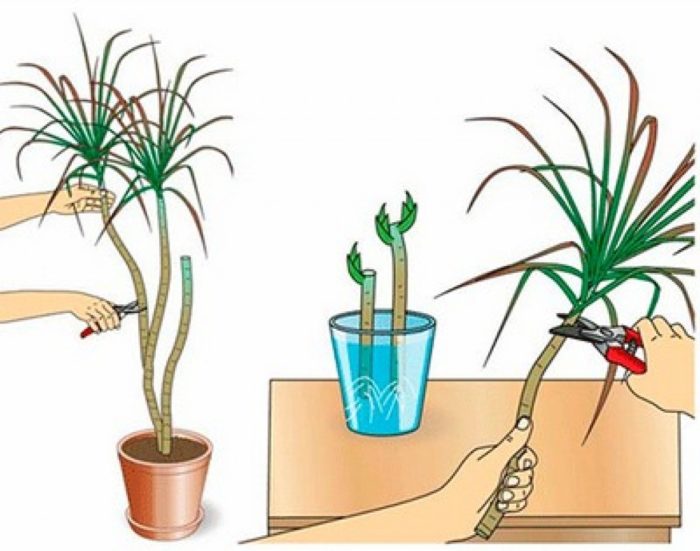
Cutting the stem is done in one of two ways:
- Just below the top on the trunk, a transverse cut is made and this place is wrapped with polyethylene or moss. After the appearance of air vents, the top is completely cut off and planted in a pot.
- Part of the trunk is completely cut off, and the cut is sprinkled with crushed coal or treated with melted paraffin. After a while, side shoots will appear here, which will form a new crown. The top of the bush is cut to slow down growth and change the elongated shape. The cut pieces are rooted in separate pots. If the cut bush is regularly watered, then in a month new shoots will appear.
Dracaena transplant at home does not cause difficulties even for beginners.
The bush is transplanted in the following cases:
- the root system has grown strongly and protrudes into the drainage holes and on the surface;
- the soil must be replaced due to loss of nutritional value;
- the plant was recently purchased and is in a temporary pot;
- decay of roots due to excessive watering (transplant for treatment);
- the palm tree is affected by pests;
- planned transplant into a larger pot.
The plant is transplanted in early spring before active growth begins. A new container is chosen with a diameter that is 20-35 mm larger than the previous pot. At the bottom, drainage is made 2 cm high from broken brick, foam, expanded clay or pebbles. Before transplanting, the palm is not watered for 3-4 days.

The bush is transplanted by the transshipment method. If, after removing from the old pot, damage is noticed on the roots, then they are cut off and sprinkled with coal. After the lump, sprinkle with water. An extracted plant with a lump of earth is installed on top of the drainage, and the voids along the edge of the container are filled with a substrate. For the first two weeks, the soil is often watered and fed to stimulate root growth.
Dracaena transplant
A transplant is called a complete replacement of the earth during transplantation with the possible transfer of the plant to another container. This is an effective tool for giving the plant new strength.
The basis for making a decision to transplant is the following:
- in dracaena, the entire pot is occupied by roots. This is evidenced by the fact that water is hardly absorbed during irrigation, the roots protrude above the surface. For young dracaena, this state occurs once a year, and for adults, once every 5 years;
- dracaena grows poorly, the leaves change color, which indicates a possible problem with the roots or with the soil.
Pot selection
The new pot should be 2 cm wider than the old one. A guideline is also the following: for plants with a height of 40 cm, a pot with a diameter of at least 15 cm is needed. Ceramic and plastic pots are suitable. If the reason for replanting is the need to simply replace the soil, then the pot can be left the same, but it must be disinfected. There should be holes in the bottom of the pot for excess water to drain.
Earth
The pot is filled with new soil, since elements harmful to the plant can accumulate in the old soil. You can use commercially available formulations for palm indoor flowers.But it is cheaper and more useful to prepare the mixture on your own: 3 part of sod land, 1 part of humus, 1 part of river sand, 1 part of leaf land. The soil should be somewhat damp. You can check for optimal moisture by squeezing a little soil in the palm of your hand. The lump should crumble when touched.
Transplant time
The best time to transplant is late winter - early spring, it can be transplanted until August. In the rest of the months, it is better not to touch the plants.
Dracaena transshipment
Transshipment is a type of transplanting, when a plant is taken out of a pot along with a lump of earth and, without affecting the roots, is transferred (rearranged) into a new larger pot. The voids are filled with prepared earth.
This method is used in autumn (if necessary), if the condition of the plant is good and there is no need to replace the land. The transshipment is more gentle for the plant, therefore it can be applied several times a year.
Features of the transplant after purchase
If there are remarks about the appearance of the dracaena, or the capacity and soil does not inspire confidence, the plant is transplanted immediately with the replacement of both the pot and the earth. If the plant is cheerful, and the pot is not bad, it is better not to injure the dracaena unnecessarily, but transplant it after a month by transshipment.
Transplant of a large dracaena
It is better not to replant large dracaenas unless absolutely necessary, since they will take root with difficulty, and the transfer of a huge tree is laborious
It is better to gently loosen the top layer of moistened soil (about 4 cm) once a year, trying not to touch the roots, select it and replace it with new soil
Post-transplant care
After transplanting, the plant experiences severe stress, it takes time for the root system to get used to new conditions, so that new roots begin to form. The first watering is plentiful. Excess water, having moistened the entire earthen lump, should collect in the pan. The transplanted dracaena are watered infrequently, because the root system has not yet entangled an earthen ball, and the water is slowly absorbed and evaporated.
The next watering is performed after the top layer of the earthen coma dries out (by 2-3 cm). After 10 days, you can give a single root stimulant "Kornevin" (1 gram / liter of water). The plant is placed in a shady place for a week, sprayed to avoid drying out. After that, plant care becomes standard.
The ability to combine transplant with pruning
Both replanting and pruning are stressful for the plants. When transplanting, the dracaena builds up new roots; when pruning, the existing roots work to form new shoots. These procedures should not be combined unnecessarily.
The need for such actions arises if it is necessary to save the diseased dracaena. It is pruned and transplanted into new soil. This can be done only in the spring period of active growth. The living crown is put on rooting.
Dracaena diseases and pests
It is not difficult to care for dracaena, even inexperienced flower growers can do it. However, even such an easy-to-care plant sometimes suffers from pests, various diseases occur.
Dracaena can be susceptible to various diseases.
Why do leaf tips dry?
When the tips of the leaves dry out, the explanation lies in the lack of moisture during watering and dry air, as well as exposure to direct sunlight. Dracaena will not dry out if the deficiencies and conditions of its microclimate are corrected.
Why do the leaves turn yellow?
The crown loses its intense color, the leaves turn yellow, the dracaena has dropped the branches if:
- dry air indoors;
- lack of nutrients in the soil, primarily nitrogen;
- excessive watering;
- direct sunlight hitting the plant.
Dracaena leaves often turn yellow
Why does dracaena fall?
The fact that dracaena sheds leaves does not always indicate a plant disease. One of the reasons for this phenomenon is natural growth. The leaves grow for about 2 years, after which they turn yellow, dry up and fall off.At this point, a scar remains on the branch or trunk. In this case, nothing needs to be done. However, a large loss of leaves may indicate that a problem exists, and the reasons are most likely in the care:
- draft - in this case, the leaves are still green;
- insufficient watering - dracaena loses fresh leaves;
- excess moisture - signs of trunk decay appear;
- dry air.
If the dracaena, despite all efforts, still loses its leaves, this may be due to the appearance of pests.
Why does dracaena rot?
Sometimes the owner of the plant discovers that the edges of the leaves have become soft, brown, curled into a tube, blackened. So that the decay process does not develop, it is necessary to find the cause of the problem, it may be:
- dry air;
- too low air temperature - the plant, frankly, froze;
- sharp temperature drops - cold at night, hot during the day;
- draft.
Pests
If the dracaena withers, dries up, spots appear on the leaves, it is possible that the plant is affected by pests. Most often she is attacked:
- spider mite;
- thrips;
- shield;
- aphid.
Dracaena leaves can be covered with spider mites
All pests spoil the beautiful appearance of the plant.
- Spider mite. Appears when there is insufficient moisture. External signs are yellow spots, light white cobweb. You can fight by spraying the plant with "Fufan".
- Shield. External signs: the growth of dracaena slows down, large brown spots appear on the inside of the leaves, they dry and fall off. If you do not fight the scabbard, then the plant dies. Treatment step by step:
- treat the plant with soapy water, washing off the pests, you can add vodka to the solution;
- can be treated with potassium permanganate by making a pink solution;
- treat with Actellik at the rate of 1-2 ml per 1 liter of water.
- Thrips. They occur with low air humidity and heat. External signs - small black pests are visible with the naked eye. Eggs are visible on the inside of the leaf, on the outside there are glossy spots, white bloom. The best way to get rid of insects is to thoroughly treat the dracaena with soapy water, mechanically removing the insects. If the amount of thrips is still high, it is worth treating with insecticides Inta-vir, Decis, Fitoverm, Aktellik.
- Aphids. They can also be seen if you look closely at the affected plant, in which the leaves curl and fall. Fighting aphids is possible only with the use of the pesticides listed above. The treatment should be repeated until a positive result.
Join the discussion! We would be interested to know your point of view, leave your opinion
Diseases and pests
The fact that the plant has captured some kind of disease will be indicated by its appearance. And then you need to take action.
- If the leaves begin to dry out or brownish spots appear on them, this may indicate that the dracaena received burns. To do this, you just need to remove the damaged leaves, and remove the flower from a sunny place and provide diffused rays.
- Another reason why spots appear is root decay. In this case, the plant must be removed from the pot, dried slightly, filled with new soil and reduced the amount of watering.
- Pests that can infect dracaena are spider mites, aphids, scale insects, mealybugs. To prevent all these troubles from happening, you need to regularly dust off each leaf, and sometimes rinse well with a shower.
- When a plant is affected by fungal diseases, it must be treated with fungicides. Garden stores sell a variety of remedies to help get rid of the fungus.
- If a white bloom began to appear on the leaves, this indicates that the plant was affected by powdery mildew. In the fight against it, antifungal agents help. Processing will need to be done several times: every week for 2 months in the form of leaf spraying and watering.Controlling powdery mildew is not easy. It is best to change the soil in a pot to fresh. In case of any defeat by some kind of disease, the earth will have to be replaced: this way it will be possible to cope with the problem faster.
- If the leaves droop, and some even fall off, the plant does not have enough moisture. It is necessary to spray more often and make sure that the ground does not dry out.
- When pests appear, the plant should be carefully examined and all pests should be removed manually. They especially like to hide from the inside of the sheet. Then treat with soapy water. Repeat this procedure several times. There are a variety of solutions available at the store that will also help deal with the problem.
You can see how to propagate the Dracaena deremska in the next video
Diseases and pests
If the rules for maintaining the reflex are not followed, it gets sick. Possible painful manifestations on the leaves of dracaena folded back and their cause:
- dry tips with too dry air;
- falling off when the soil is dry and drafts;
- yellowing with waterlogging;
- twisting with a lack of atmospheric humidity;
- dark spots when watering with hard water;
- loss of pattern in low light.
The dracaena reflex has a weak trunk, so it is provided with support.
Quite often, the reflex is affected by pests, among which there is a scale insect, spider mites, aphids and mealybugs. When unwanted guests appear on the plant, the following measures are applied:
- hot shower rinsing;
- insecticidal treatment.
Dracaena unbent is a capricious representative of the Dracaena genus. But with careful care and observance of the correct light regime, the plant develops well and looks spectacular.
Description
Janet Craig (Janet Craig) - a variety of dracaena, the leaves of which are painted in a uniform dark green color. The leaf plates are smooth, glossy, elongated lanceolate. In young plants, in the first months, the leaves grow in a vertical direction, and their length is usually 30-40 cm, and in adults they grow up to 1 meter and bend downward.
There are noticeable grooves (3-4 pieces) along the leaf plates. Among the cultivated forms, there are variegated varieties with white, yellow or light green stripes over the entire surface of the leaf or only along its edge.
Janet Craig's trunk shape is not much different from other members of the genus. The erect stem of green color is covered with transverse grayish-green stripes that remain in place of dead leaf plates. The diameter of the trunk in adult palms reaches 5-8 cm, and the height with proper care can be 2-4 meters. However, flowers with a height of 1.5-2 meters are most often found in room culture.
In indoor culture, this dracaena rarely blooms. In nature, short inflorescences in the form of a brush or an ear are formed on it. They are much denser than other species, which is why they are often called "bumps". The petals in the budding stage are colored light pink, and when opened, they are creamy white.
Dracaena diseases and pests by Janet Craig
If Janet Craig cares for the palm tree in violation of the above rules, then the plant may be affected by diseases or pests:
- Excessive moisture in the air and soil leads to decay of the roots and the development of bacterial and fungal diseases such as bacteriosis, alternaria and phyllosticosis. If measures to combat these diseases are not taken in time, the plant may die.
- Excessive watering and an earthen crust provokes the reproduction of fungi, wood lice and worms. They damage the roots, increase the acidity of the soil.
- Insufficient atmospheric humidity can cause leaf tips to dry out.
- Dangerous pests for dracaena are aphids, spider mites, scale insects and thrips.
- With a lack of moisture in the soil, dracaena leaves can curl and dry out.
- Direct sunlight is dangerous for dracaena with leaf burns.
If the plant has undergone rotten diseases, it is necessary to get rid of the damaged leaves and change the soil in the flower container, carefully treating the pot before transplanting. Treatment with fungicides will help get rid of bacterial and fungal diseases.
With a massive defeat of dracaena by pests, the plant is treated with insecticides. If there are single copies, then folk remedies (treatment with soapy water) are best suited.
While watching the video, you will learn about growing dracaena.
With strict adherence to the agricultural techniques of caring for Janet Craig's dracaena, you will have a healthy and beautiful plant, a cozy island in your home or office. And the appearance of this green corner can be customized as you wish. Having planted several palms in a wide planting container, combining the neighborhood of dracaena of different heights, intertwining the stems of plants with each other, you can constantly change and improve this living decoration.
Houseplants
Care features
Dracaena Janet Craig belongs to the agave family. Its homeland is Asia and Africa. The plant has a decent appearance. Even at home, the trunk can reach a significant size. This flower needs light. Otherwise, the leaves may turn green or become monochromatic. Keep in mind, however, that plants with dark leaves do not require strong lighting. Dracaena Janet Craig does not tolerate direct sunlight. In the event that it is planned to be placed on a balcony, terrace or veranda, the plant must be shaded. In addition: • transplant is carried out every 1 or 2 years; • all manipulations are carried out in March; • this requires a special primer. The transplant is carried out when the roots fill the old container tightly. The size of the new pot should be an order of magnitude larger than the previous one. There is no specific schedule for watering the plant. It is carried out as needed, when the ground is dry and solid. After the moisture has been absorbed, it is recommended to loosen the soil well so that a crust does not form on it. For better growth of dracaena, it is necessary to use a special fertilizer for non-flowering plants. You can buy it at any flower shop. The temperature of the palm tree is on average 22-25 degrees. On warm days, plants can be taken out on the balcony, and also displayed in the garden (in the shade). In the winter season, dracaena needs peace. Therefore, it is advisable to place it in a cool room, where the temperature does not exceed 14 degrees. In this case, watering must be reduced to several times a month. Dracaena diseases In the event that dry spots, roughness, as well as cracks and other unpleasant phenomena are present on the leaves, it is necessary to identify the cause and cure the flower as soon as possible. In the event that the tips of the leaves are dry, this indicates that watering is not being done correctly. Namely, the plant is not watered so often. In some cases, the flower is affected by a fungal infection. It manifests itself in a certain way. A brown outgrowth forms on the surface of the leaves. Because of this, the dracaena has a lifeless, sick appearance. To solve this problem, it is necessary to prepare an alcohol solution, then thoroughly wipe all defective leaves with it. In stores, you can find special products to combat the fungus. After processing, you must carefully monitor the condition of the flower. If symptoms persist, measures to get rid of the fungus are repeated.
Description
Dracaena deremskaya is an indigenous inhabitant of Africa, with about 80 varieties. At the same time, at least 10 species have taken root well at home. They can usually be found in apartments. While the dracaena is small, it is a bunch of leaves that grow from the ground. But gradually, as it grows, a trunk appears, on top of which leaves are located.In appearance, the plant is very reminiscent of a palm tree. Long leaves adorn white or yellow stripes in the center or at the edges.
Provided that the tree is not pruned, it can reach 3 m and will be a small slender palm tree. But most often the tree is pruned, and then it gives lateral shoots and becomes more compact and lush. In its natural environment, dracaena blooms, and the flowers have a very interesting color: red on the outside and white on the inside. After flowering, orange berries appear on the plant.
How dracaena deremskaya reproduces
Dracaena can be propagated in various ways.
Germinating seeds
A complex breeding method that is practically not used at home. Soak the seeds in saline and plant them 1 centimeter deep in a nutrient medium. To create greenhouse conditions, the box is covered with foil.
Rooting cuttings
To propagate the dracaena, the cutting is cut from the stem. The length of the trim should be between 7 and 11 centimeters. You can place it vertically in the substrate or lay it horizontally, slightly burying it at one end into the ground. After that, the soil is moistened and covered with a film.
Important! Every 4 days, the stem cutting is sprayed from a spray bottle
Air layering
The extreme stems are tilted to the ground and buried in the ground, leaving the top above the ground. For stability, fix with a bracket and watered thoroughly. After a month, the layers will take root and can be cut off from the main bush.
Home care
Dracaena mix can be called an unpretentious plant. Special conditions for growing in an apartment are not required.
Features of care after purchase
You should not transplant the purchased plant into a new pot on the day of purchase. Give him the opportunity to adapt to new conditions. This usually takes about a week. During this period, it is strictly forbidden to feed dracaena. Often the store plant is planted in peat soil, so after getting used to it, the plant must be transplanted.
Lighting
Severe darkening can affect the growth of the plant, for which diffused light or bright partial shade is more suitable. The dracaena mix must be closed from direct sunlight. The darker the leaves, the more hardy the plant will be in the shade.
Temperature
For the summer period, it is better if the air temperature is from 20 to 25 degrees. Excessive rise can lead to leaf fall. To avoid this, you need to regularly moisten the soil and spray the leaves.
Between October and March, it is recommended to move the plant to a cool room with a temperature of about 18 degrees. Lowering below 12 degrees is detrimental to the dracaena mix.
Air humidity
High humidity is the best condition for growing dracaena mix. If the air in the room is dry, in addition to regular spraying, you need to install a container of water near the pot.
Watering
Dracaena mix is a moisture-loving plant that needs regular spraying and watering. The soil should always remain slightly damp.
The combination of abundant watering with low temperatures can lead to rotting of the roots and trunk.
In summer, you need to water once or twice a day, and in winter, as the earth dries out, but not more often than once every two weeks.
In the cold season, it is better to set the flower pot away from the heating radiators. The appearance of brown spots on the leaves indicates insufficient watering.
Sometimes the plant can have an outdoor shower. This will wash away excess dust that is preventing the leaves from breathing.
Bloom
Some varieties of dracaena mix can throw out peduncles. This happens very rarely, since even in natural conditions, flowers appear infrequently.
The inflorescence consists of many small flowers located on a long stem. Their color can be white, pink, bluish or yellow.Owners of blooming dracaena mix note an unpleasant smell that spreads well throughout the room.
Fertilizer (top dressing)
Dracaena needs to be fed during watering, by mixing water and feeding. Abundant fertilization will lead to plant diseases. In winter, you need to feed it no more than once a month, and in the hot season and during the period of active growth at least once every ten days.
For these purposes, complex fertilizers for indoor plants or the "Plantaphor" agent, which is used according to the scheme, are suitable.
Transfer
If the plant has stopped growing actively, you can transplant it into a new pot. It is recommended to do this no more than once every two years. On sale there is a soil called "Dracaena", which is optimal for growing a flower at home. To make the soil looser, you can add crushed brick chips.
There is a procedure for transplanting dracaena mix:
- carefully remove the flower from the pot along with the ground;
- it is not necessary to remove all soil;
- damaged roots must be cut off, and the cut must be covered with ash;
- lay out the drainage on the bottom of the new pot (it is better to use crushed stone);
- lower the dracaena in a pot and sprinkle it with earth;
- we compact the soil and fill it with abundant water.
After transshipment, you do not need to place the plant on a sunny windowsill; it is better to choose a place with diffused light.
Growing from seeds
It is necessary to grow dracaena from seeds in early spring. Seeds purchased in the store or collected on the plant must be soaked in advance in zircon or epine. The best soil for germination is a mixture of equal proportions of turf and sand. The temperature should be at least 25 degrees. The land is regularly sprayed.
The installation of mini-greenhouses contributes to the rapid germination of seeds. The first sunrises appear in a month. The small plant is then grown as an adult.
Reproduction
The most productive way to propagate dracaena mix is to cut off the top of the plant. Fifteen centimeters is enough to form a daughter palm. The scion is lowered into a glass of water diluted with several tablets of activated carbon. Water can be replaced with wet sand.
Alternatively, you can immediately submerge the cut piece into wet soil by covering the plant with a plastic bag. In about two weeks, the root system will begin to grow.

